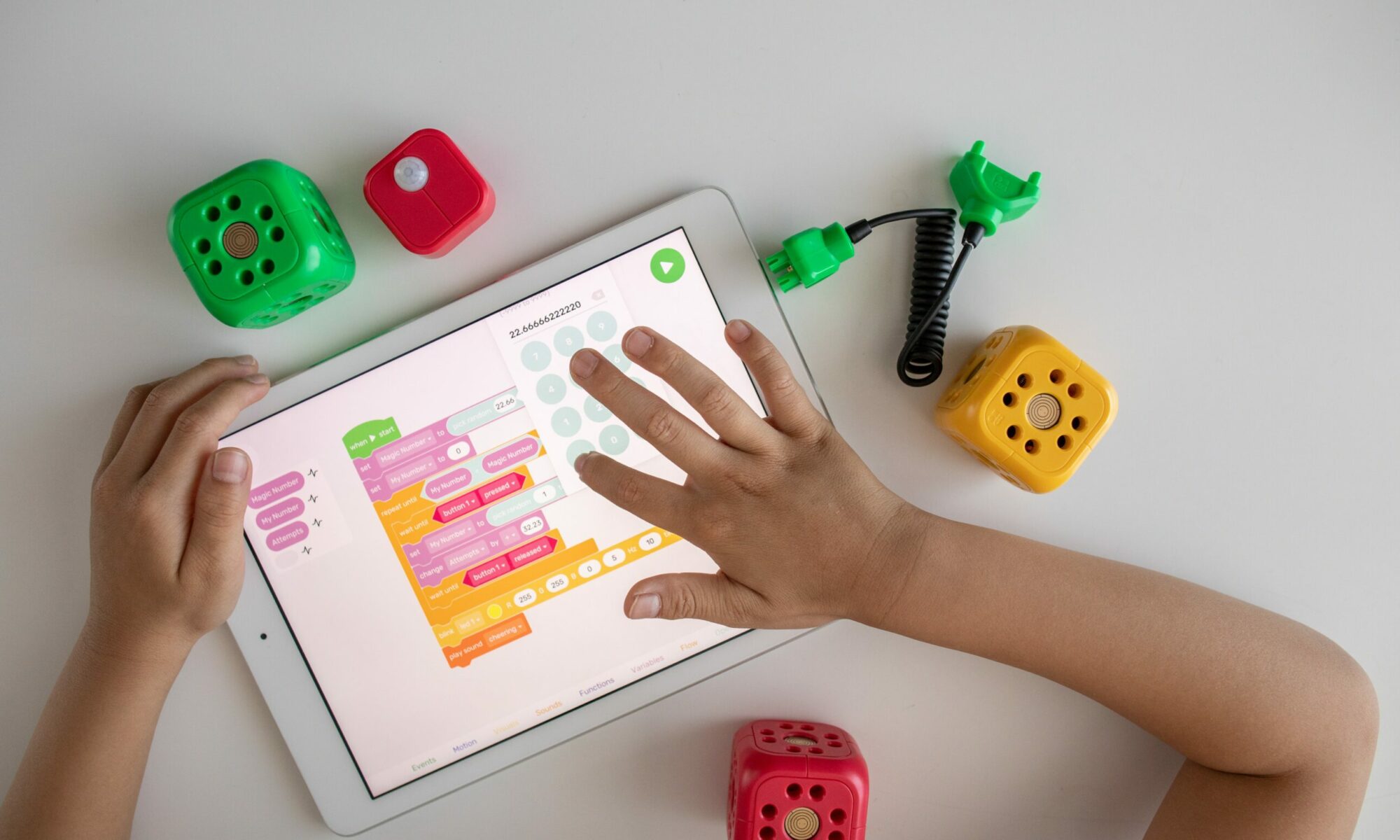This post was made collaboratively by Tyla Penner from Spend Time With Ty and Kate Barnes from Recess Knitting as a submission for the Edtech Inquiry for EDCI 336.
What is Gaming in Education?
Gaming in education is the use of games through multiple platforms to allow students to explore their learning in a dynamic and interactive format. Games can be used in a multitude of ways within the classroom as well as on a multitude of platforms. Gaming in education is a large and very broad topic that includes anything from board games to video games. For the purpose of this EdTech inquiry, we will be focussing on games used in education involving technology. Not only does gaming in education provide students with more experience using electronics, it can help to provide engaging, opportunity rich learning environments that help to perpetuate student learning and motivation forward.
Pros of Implementing Educational Gaming
As teachers, we get to have final say in what technologies are and are not used within our classrooms. When thinking about using technology for educational gaming, there are many pros and cons to consider. Studies have shown that when using educational gaming in the classroom, students’ engagement in and attention to lessons is largely increased (Pastore & Falvo, 2010; Ruggiero, 2013). This, and the increased motivation to learn, is one major pro of including educational gaming in the classroom. This increase in motivation, engagement and attention could possibly be due to the highly visual and fast-paced nature of games, which stands apart from traditional teaching methods. Another study found that students also reported that they felt more focused on the task at hand rather than their grades when educational gaming is being used in the class rather than traditional teaching methods (Tuzun et al., 2009). Among most students, educational gaming is the most popular and preferred form of instruction.
It is clear that students prefer educational gaming, but what are the pros of using it for teachers in the classroom? First, some games have features where students can play based on their own current skill set or learning level. This leaves room for differentiation in learning, and also the possibility of working with students who have special or diverse needs in the classroom (Ruggiero, 2013). This use of technology can encourage students to work within their own levels, but can also encourage active participation and teamwork if used within a whole class setting (Pastore & Falvo, 2010). Another positive use of educational gaming is to allow students to virtually experience things that can deepen their knowledge of a topic (Pastore & Falvo, 2010; Ruggiero, 2013). For example, the NASA Mars Rover game (linked below) can bring depth to students’ knowledge of Mars’ surface by allowing them this virtual experience. Another thing to consider is how students’ test scores are affected by the use of educational gaming. Some research has found that students’ test scores do not decrease when educational gaming is used, but that the scores are relatively equal to students who have only experienced traditional teaching methods (Pastore & Falvo, 2010). Lastly, the increased demand for educational games has lowered the cost of development, and therefore lowered the cost of their purchase (Pastore & Falvo, 2010). Many educational resources can even be found for free. As time goes on, more and more schools or entire districts are buying the rights to certain educational games, so teachers have full free access to these resources in the classroom, therefore removing the payment factor from this decision.
Cons of Implementing Educational Gaming
When it comes to thinking about the cons of implementing educational gaming in the classroom, there are only a few things to consider from a students point of view. First, of course not all students will like this form of education (Ruggiero, 2013). However, it is very hard to find a method of teaching that suits all children in the class. More notably, students can form negative feelings towards games and therefore towards their learning if the games are too competitive, or focus too much on winning and losing.
As teachers, there are more things to consider. First, is how we are actually using the games in class. These games still require background knowledge to be successful, both in the actual use of the technology (which is a struggle for younger students especially) and content wise (Pastore & Falvo, 2010). Therefore, these games cannot fully replace traditional teaching methods. Ruggiero (2013) found that pre- and in-service teachers reported that educational gaming works best when implemented after some traditional teaching has already been done, as a way for students to practice using their new skills or knowledge. Another thing for teachers to consider when using educational gaming in the classroom is classroom management (Pastore & Falvo, 2010; Ruggiero, 2013). This is especially important when students are playing games on technology that is connected to the internet, and has access to websites other than the ones the students are supposed to be using. Students can become easily distracted and off-task if they are not monitored during their time, meaning that classroom management and standards for student behaviour need to be set and enforced while educational games are being used.
There are pros and cons to be considered when we are thinking about bringing educational gaming into the classroom. There is also limited current research on the topic. Overall though, it seems as though educational gaming, if implemented correctly, could be an absolute asset to the classroom.
Some Educational Gaming Resources
Even within the category of technology based gaming in education, there are a variety of different forms that gaming can take. Gaming itself takes many forms from PC based platforms, console platforms and online games. Here we will describe a few specific games that we found while researching gaming in education and share how they can be implemented into a classroom.
NASA has specifically developed educational online games for teachers to use in their classrooms with students. There are a plethora of games and teaching resources to choose from that cover a wide variety of topics such as science and technology, planets, the sun, the universe and solar systems. Some games on this website seem to work better than others, but the interactive nature of them allow students to explore their knowledge of current space technology and scientific advancements. One of the benefits of the games available on NASA is the educational videos and information that is presented with the games and website. Students are able to peak their interest in a topic through fun gameplay and further have access to a wealth of information about that topic.
One great example of an educational game available through NASA is the Mars Rover Game. This game allows students to explore the hills and valleys of mars using the mars rover as you search for the presence of water. This game can be downloaded onto a desktop, IPhone/IPad or Android devices. This game could be implemented into a inquiry on the mars rover as it is such a current topic in science. The available information provided on the Mars Rover for students can help to peak their interest further before or after playing the game.
Another great resource provided by NASA is NASA Climate Kids which allows students to have access to games that involve themes such as changing climates, the effects of pollution and global warming on ocean health and greenhouse gases. This website also provides a multitude activities and information for teachers to use in their classroom alongside the games.
This game allows students to explore how changing ocean health and temperature can affect the health of coral. The game focuses on the topic of coral bleaching further provides students with an explanation of what that is and what types of research is going into studying the phenomenon.
In this interactive card flipping game, students are able to explore the different Greenhouse gases and how they are created and how they are detrimental to leading to global warming. The Greenhouse gases are presented as persona’s which students can learn more about through flipping the cards.
SpellingCity is an online program that provides students with interactive games that give practice to expanding their knowledge of words through spelling, writing, phonics and vocabulary activities. This program has released that they will be transitioning to Vocabulary A-Z. This resource is a paid for service, however there are a few games and spelling activities that are provided for free with signing up.
Math seeds is an online paid program that provides interactive and engaging math games for students in primary. Use of this program within a classroom allows for each individual student to work at their own pace and on concepts that fit their math ability and understanding. This program is suggested to be used alongside in-class math instruction as a fun but productive activity to fill down time or breaks. The amount of different visual representations of math concepts through games provides students with motivation to move their way forward to harder concepts.
CodeSpark Academy provides games that introduce the concepts of coding in an intuitive and word free format that provides accessibility to a range of primary and intermediate students. This program is free for classroom use and only requires signing up to use. This program provides students with games that instill problem solving, logical thinking, creativity, persistence, resilience and confidence. The program also provides teachers with a breakdown of how each student is progressing and can be connected to multiple areas in the curriculum including Math, Science and Applied Design, Skills and Technologies. Further, students will gain practice in using technology through using IPads. This program can be used to teach the basics of coding from kindergarten to Grade 5.
GoNoodle is a company that provides kinesthetically centered games and videos that can be used in the classroom to promote movement and academic success. These games use a whole child approach to create content that focuses on physical wellness, academic success and social-emotional health through engaging and fun games and activities. In the classroom, GoNoodle works to provide a learning environment that boosts productivity through movement and mindfulness, has improved behavior through emotional awareness and practice and works to build a community through building up student confidence and providing peer connections. GoNoodle is a free online resource that requires a sign-up. GoNoodle provides games for students through the GoNoodle free app. This app provides games centered around movement. Some in-app purchases are offered.
Minecraft is a world building online video game which can be used in the classroom to provide students with a video game experience that involves collaboration, inquiry and creative thinking. Minecraft provides opportunity for students to learn through a multitude of ways both creatively and through curriculum outcomes integrated into the game and lessons. Minecraft can be used to teach basic coding, as well as content from subjects such as history, Science, Math, Art, Computer Science and Language Arts and more for grades K-12. Further, the Minecraft: Education Edition website provides a multitude of lesson examples for teachers to use and creates an easy introduction to using the platform in the classroom.
References
McClarty, K. L., Orr, A., Frey, P. M., Dolan, R. P., Vassileva, V., & McVay, A. (2012). A Literature Review of Gaming in Education. Research Report. Pearson.
Pastore, R. S., & Falvo, D. A. (2010). Video games in the classroom: Pre- and in-service teachers perceptions of games in the K-12 classroom. International Journal of Instructional Technology and Distance Learning, 7(12), 53-60.
Ruggiero, D. (2013). Video games in the classroom: The teacher point of view. In Games for Learning Workshop of the Foundations of Digital Games Conference, Chania, Greece, 2013. Available at http://fdg2013.org/program/workshops/papers/G4L2013/g4l2013_02.pdf
Tuzun, H., Yilmaz-Soylu, M., Karakus, T., Inal, Y., & Kizilkaya, G. (2009). The effects of computer games on primary school students’ achievement and motivation in geography learning. Computers and Education, 52, 68-77.
Featured Image by Robo Wunderkind on Unsplash


